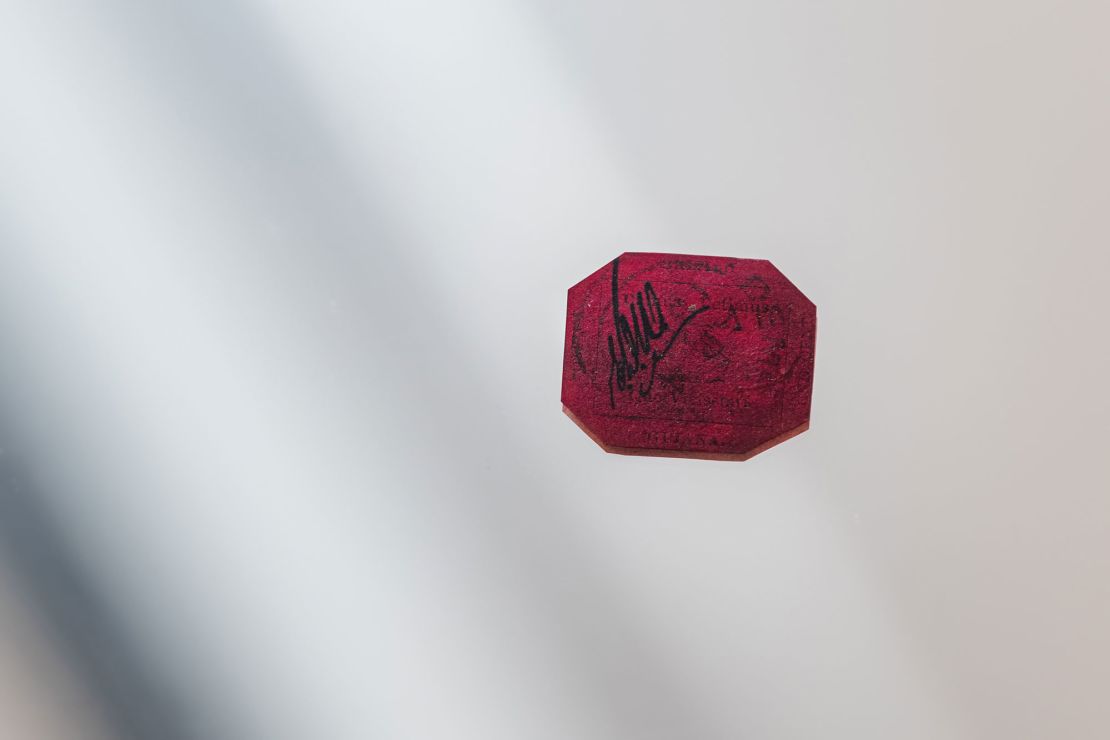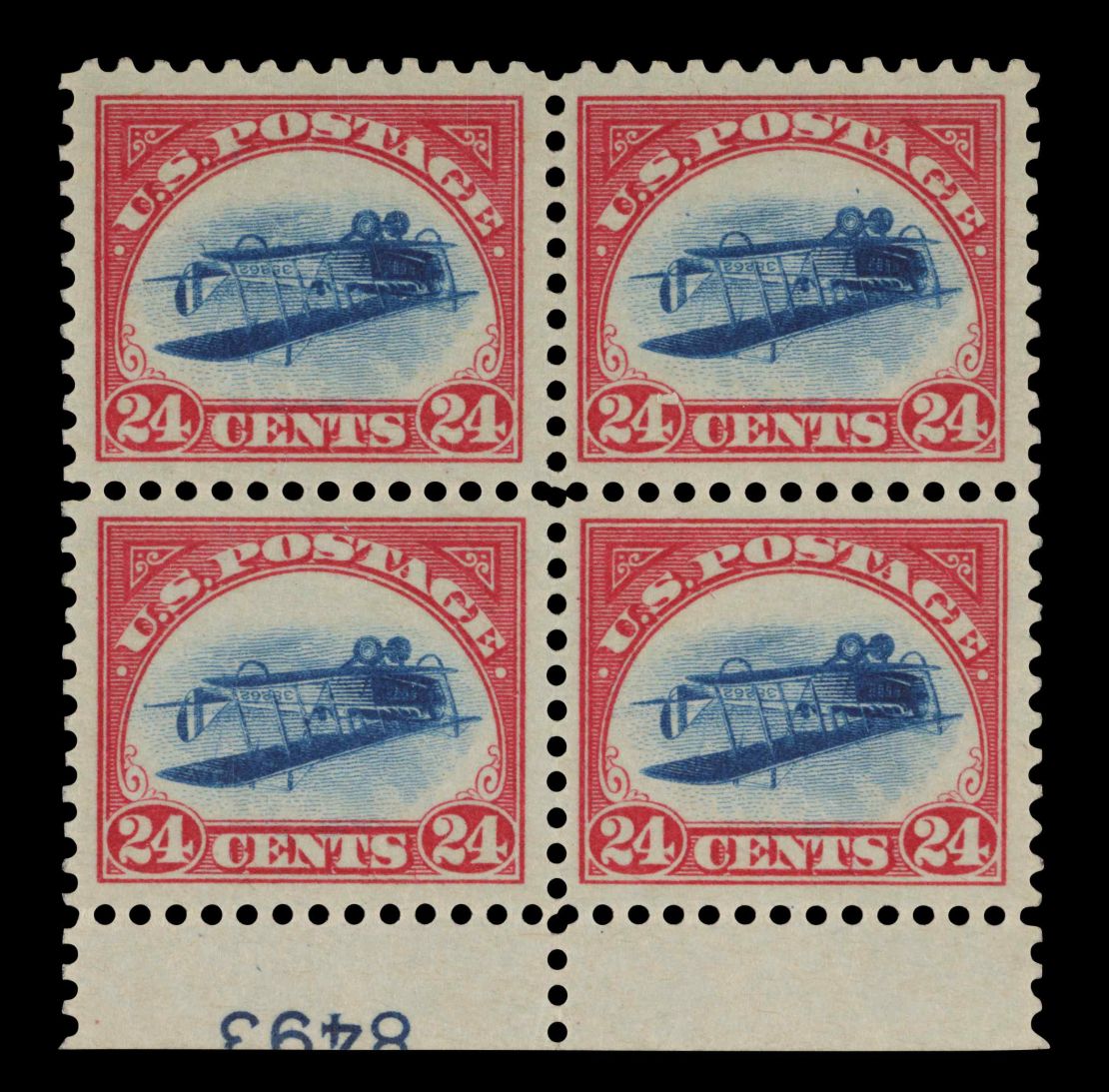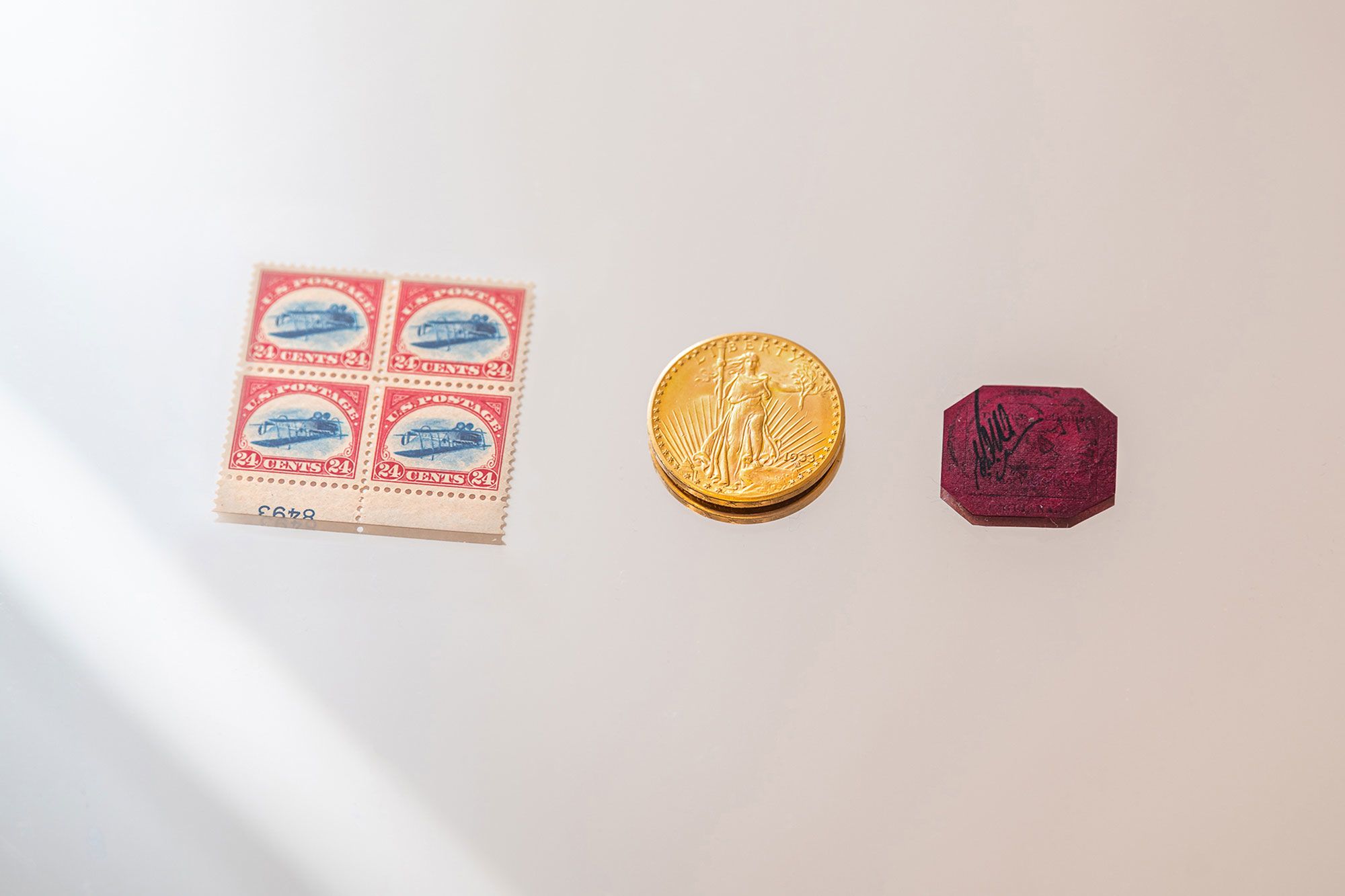Two of the most coveted items in stamp-collecting and one of the world’s rarest coins could fetch a combined $37 million when they go under the hammer in New York next week.
The three collectibles – a stamp from a former British colony, a 1933 “Double Eagle” coin and a sheet of US postage stamps printed with a unique error – may all set new auction records within minutes of one another, according to Sotheby’s, which is organizing the sale.
The oldest of the items is a 165-year-old One-Cent Magenta, described by the auction house as the world’s “most famous and valuable stamp.” Hailing from British Guiana, now known as Guyana, it is believed to be the last surviving stamp of its kind.
At the time of its creation, the colony’s stamps were all imported from Britain. But a shortage in 1855 prompted British Guiana’s postmaster to commission a new series from a local newspaper printer, according to Sotheby’s. The specimen sold on Tuesday is the only one known to have survived.

The example on sale next week is the only one known to have survived. After being rediscovered by a schoolboy in 1873, it has since passed through a number of prestigious collections, breaking the record price for a single stamp each time it was offered at auction, Sotheby’s said.
In 2014, it was bought for $9.5 million by shoe designer Stuart Weitzman, the owner of all three items featured in next week’s auction. Continuing the tradition of previous owners, Weitzman has marked his initials, SW, on the stamp’s reverse.
The One-Cent Magenta is expected to sell for up to $15 million. So too is another of Weitzman’s collectibles: an exceptionally rare $20 coin dating back to the 1930s.
The last gold coin struck for circulation in the US, the “1933 Double Eagle” never entered circulation. Featuring Liberty on one side, and an eagle in flight on the other, almost all of them were returned and melted down.

Only a handful of the coins were spared this fate, and a small number entered the market. But in 1944, a Secret Service investigation declared that any of them found in collectors’ hands would be considered stolen, according to Sotheby’s.
The 1933 Double Eagle going on sale next week is the only one that can be legally possessed by a private individual, following a legal battle between the United States Treasury and a former owner.
In 2002, it became the second most expensive US coin ever to sell at auction when it fetched $7.6 million.
The last of Weitzman’s three items – which Sotheby’s has collectively dubbed the “Three Treasures” – is a sheet of the very first US airmail stamps, dating back to 1918.
The stamps are famous for an unusual mistake: Due a to a printing error, images of a plane on the front of the stamps appear upside down.

Known as “Inverted Jennies,” a reference to the nickname of the airplane featured in the design, only 100 of the stamps were produced before the error was discovered. The block of four stamps sold for $4.9 million to set a new auction record for a US philatelic item.
Global head of books and manuscripts at Sotheby’s, Richard Austin, said in a press release that all three items “hold an indelible place in history, and in our collective imagination.”
In a press statement, Weitzman said that he had accomplished “a life-long dream of collecting the single greatest rarities in the two great collecting areas of stamps and coins and then placing these extraordinary treasures, hidden away for decades, on continuous public view.”
“Today my dream is to leave a legacy of charitable works to which the proceeds from the sales of these treasures will go,” he added.
